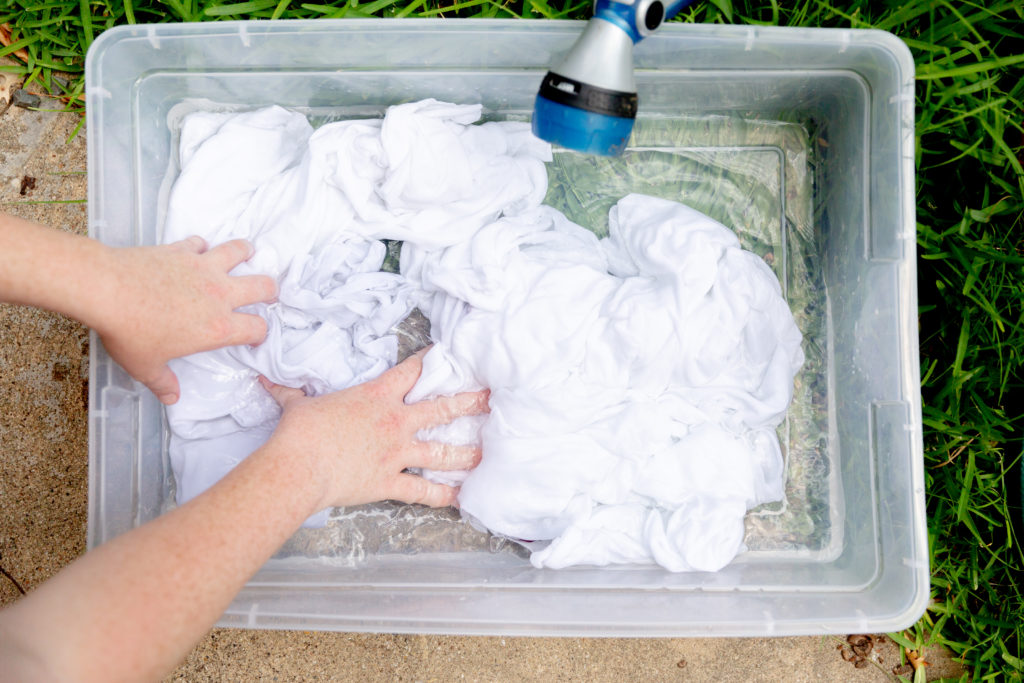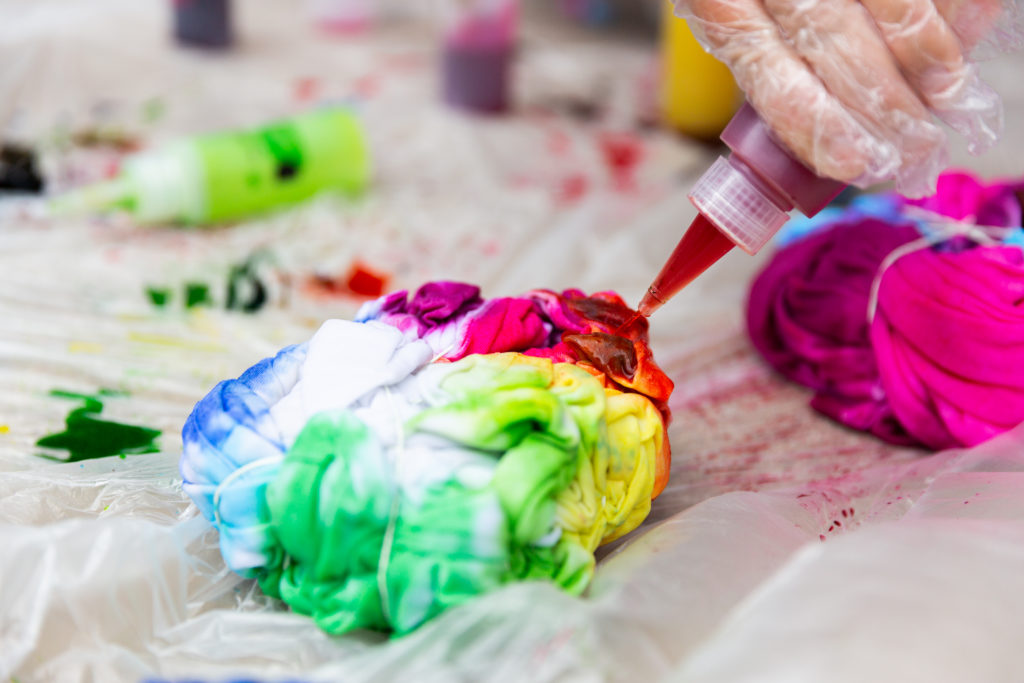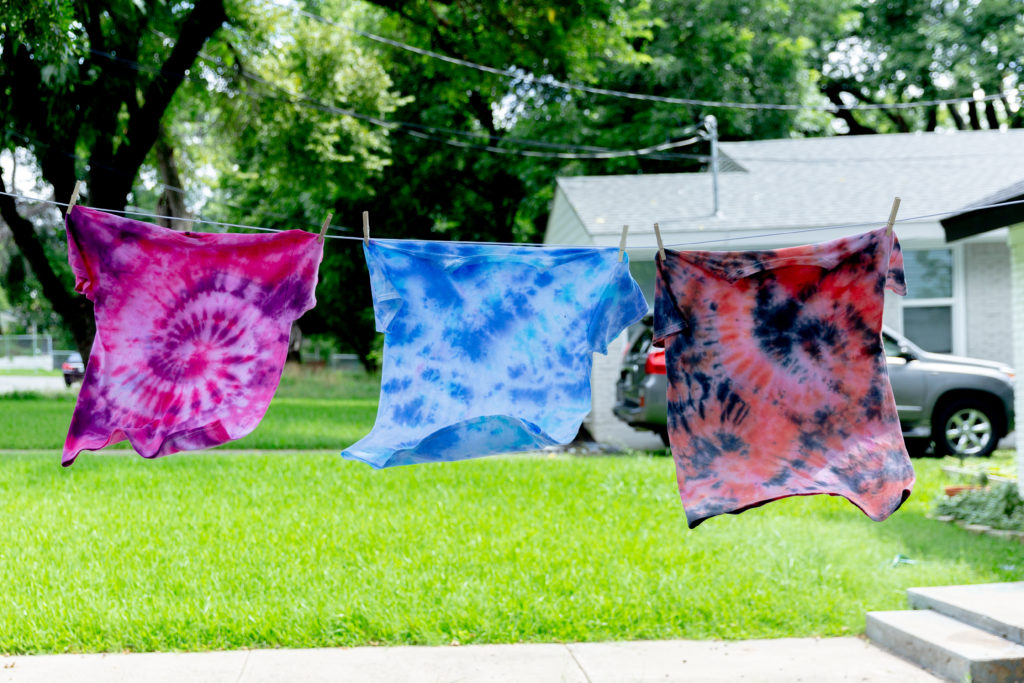Keep Summer Colorful With DIY Tie-Dye
Get funky this summer by teaching the kids how to tie-dye clothes. This guide to DIY tie-dye is filled with tips and tricks to make your summer attire extra colorful. Here’s a step-by-step guide to making groovy patterns.
1. Select white, cotton clothes. The best type of fabric for tie-dyeing is cotton; any pure white cotton article of clothing, such as a T-shirt or sweatshirt, would be well-suited to this project. Make sure that the garment is washed.

2. Presoak the fabric in warm water. Do this right before dye application to help the fibers receive the dye better.
3. Pick your dye. For the brightest colors, you can grab a decently priced tie-dye kit like this one. But if you’re committed to truly DIY tie-dye, you might prefer making your own dye using fruits, vegetables, and spices. This is a great eco-friendly, chemical-free option, but the dye may be duller in hue and less permanent. You can find instructions for homemade dye here.

4. Tie-dye time. There are three main methods for tie-dyeing, each of which is reliable.
- The rubber band method: Perhaps the most popular tie-dyeing technique, the rubber band method is achieved by folding the cloth and twisting rubber bands around it before applying dye. The most common patterns are spiral, stripe, bullseye, crumple, and diamond, but there are dozens more. (You can learn how to achieve these patterns and others here.) After folding the garment to desired patterns and applying rubber bands, apply mixed liquid dye to the fabric. Allow the fabric to sit for at least six hours. For darker colors, allow the garment to soak longer.
- The salt method: Cover your work surface with plastic bags to protect it from the dye. Spread the garment over the protective covering and pour dye over the garment. Sprinkle salt in a pattern for a more precise effect or haphazardly for a glass-like effect. Wherever the salt is placed, the dye will not adhere to the fabric. Let the garment sit for at least four hours before removing the salt and rinsing.
- The ice method: Set a drying rack inside a plastic basin. Crumple the fabric and place it on top of the drying rack. Place ice cubes on top of the fabric and sprinkle powdered dye on the ice cubes. Allow the ice to melt and the clothing to soak for 24 hours before rinsing. This method will create a waterlike ripple effect and a unique dye pattern.

5. Wash the dyed garment. After letting the newly dyed clothing soak, rinse it with cold water until it runs clear. (Leave the rubber bands in place if following the first dyeing method.) Then, run your garment in the washing machine with cold water by itself. (If following the rubber band method, remove bands after the first wash, and wash it in cold water once more.)
6. Party time. Now that you are an expert on DIY tie-dye, throw a tie-dye party for the kids! Stock up on white cotton T-shirts, dye, rubber bands, salt, and ice. Have the kids try all three techniques on a hot summer day in the yard, where they are free to make a mess. Far out!
When the tie-dye party is over, enjoy these backyard summer games in your groovy new get-ups.
© 2021 Texas Farm Bureau Insurance



